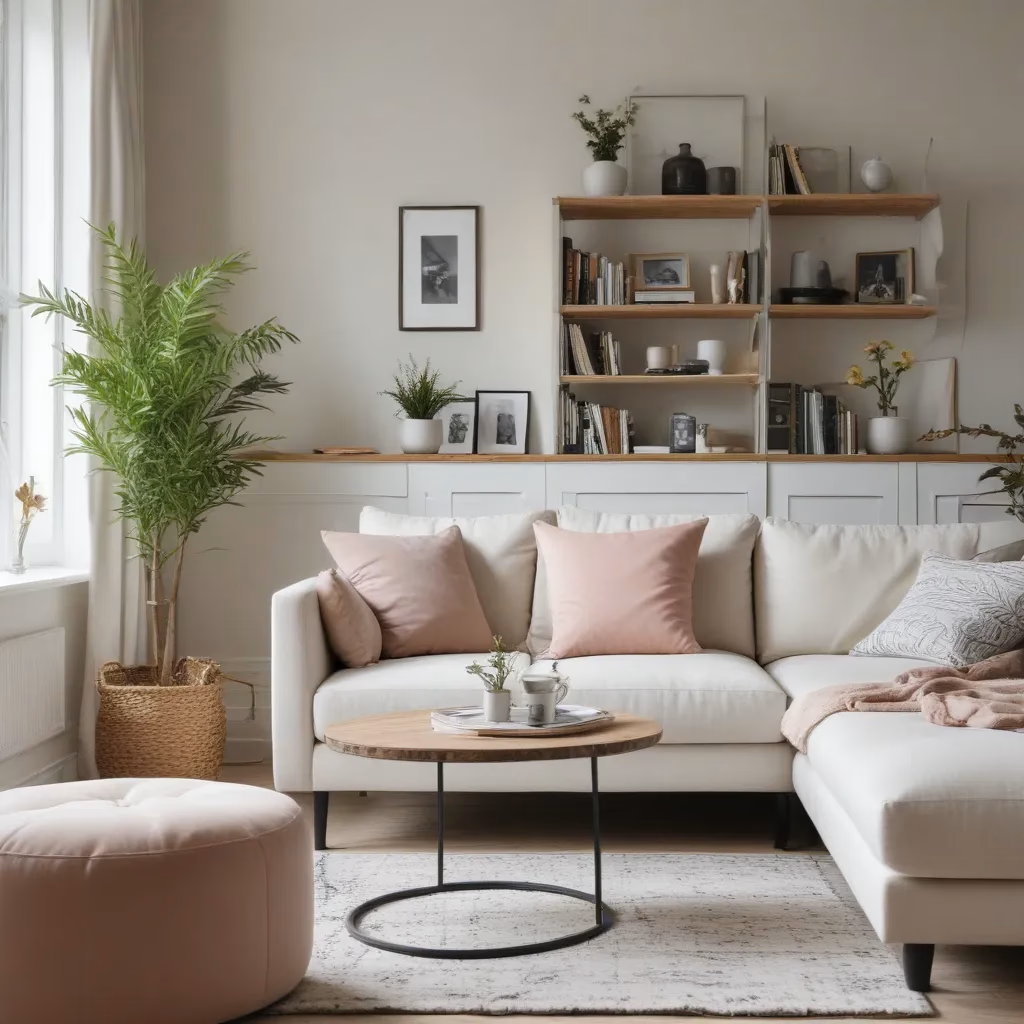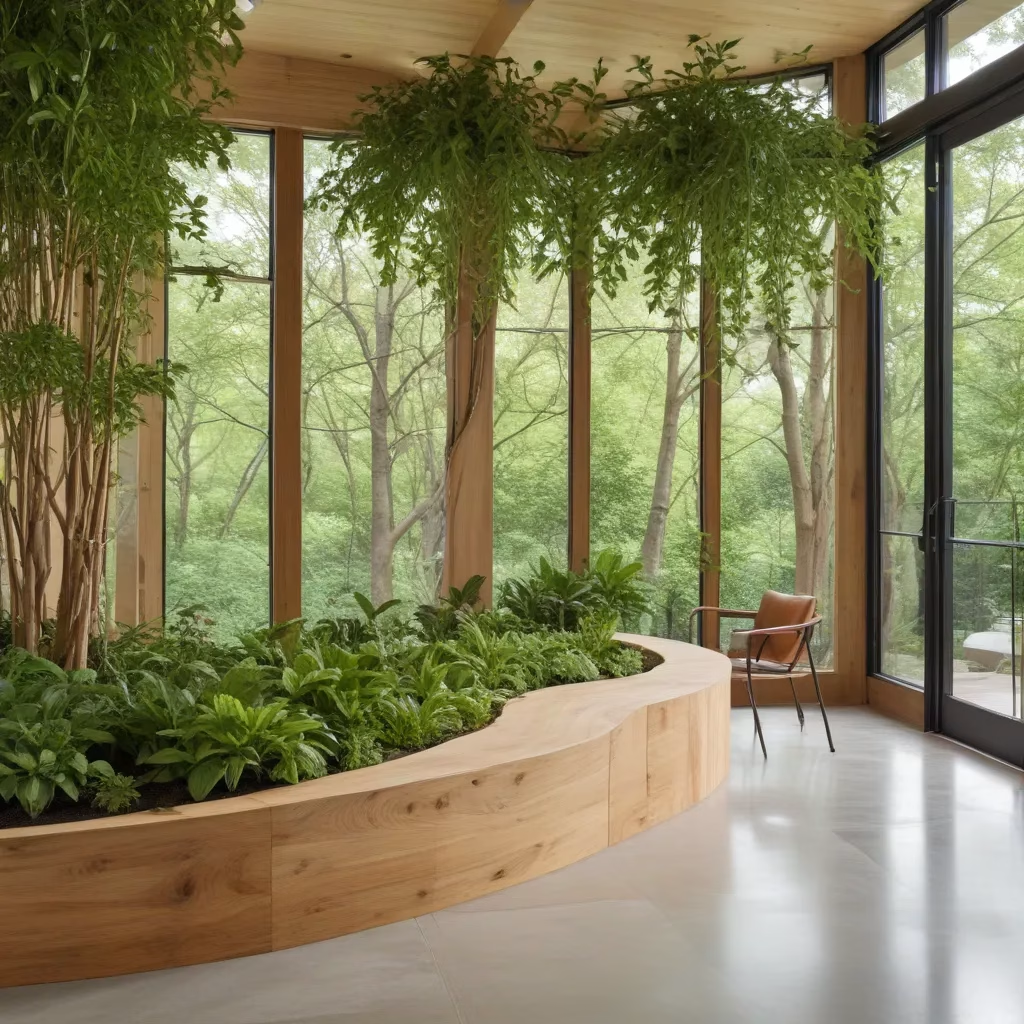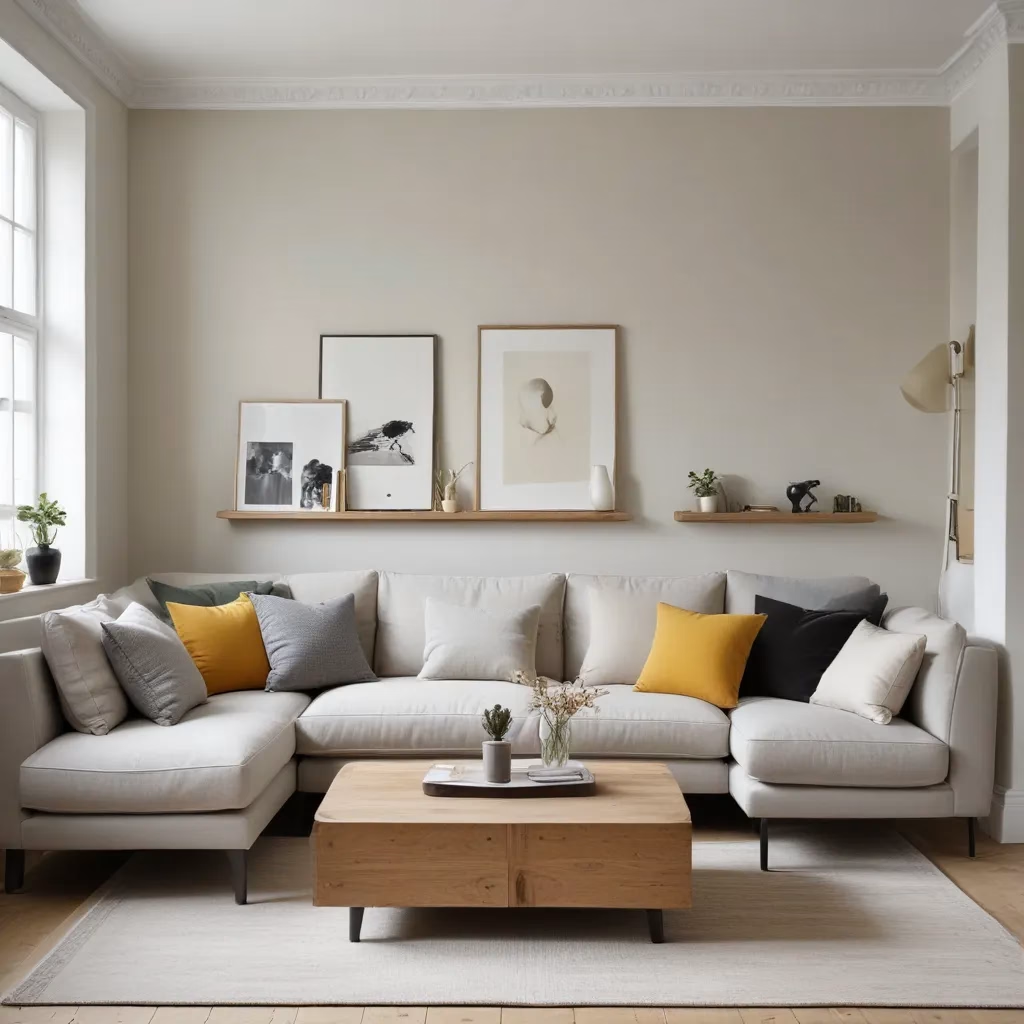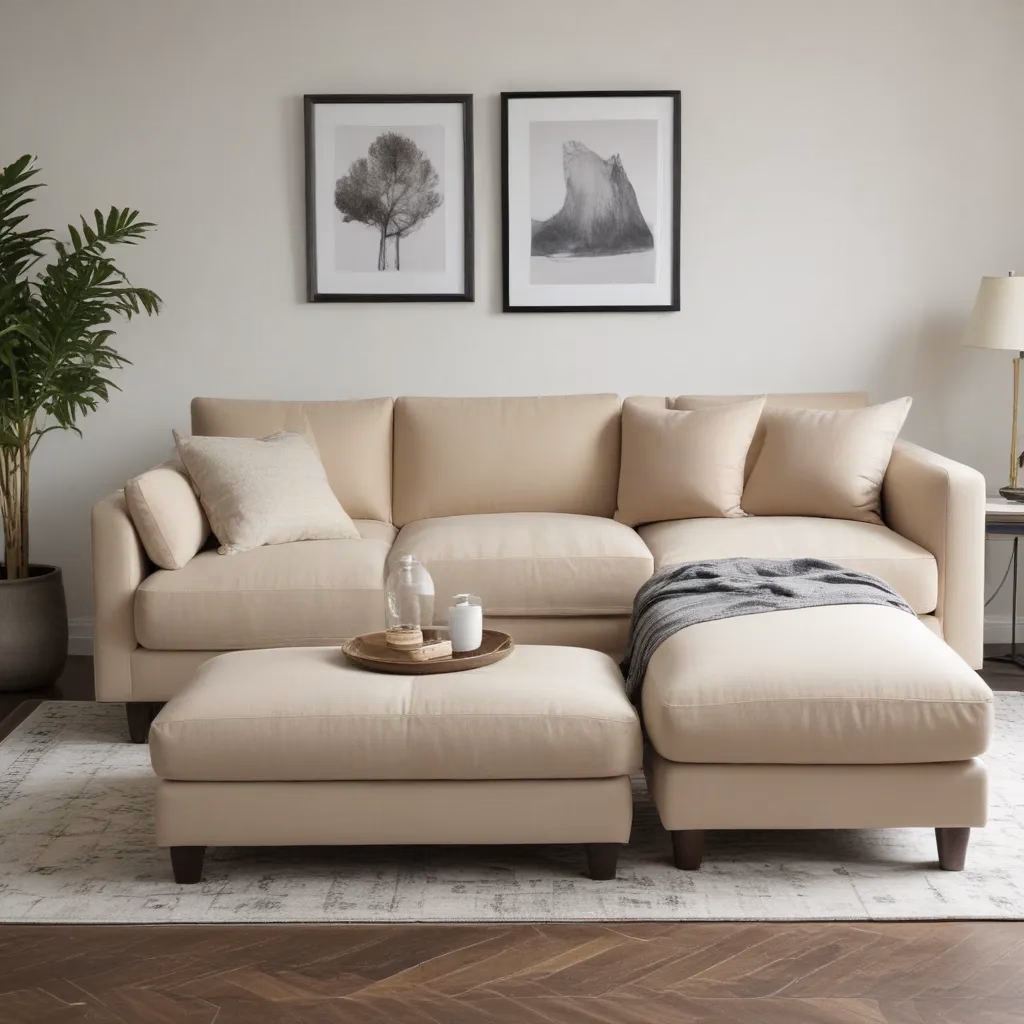
Our homes should be a sanctuary – a place to unwind, recharge, and escape the stresses of everyday life. Yet for many of us, our living rooms have become a source of clutter, chaos, and mental overwhelm. Research has shown that a messy, cluttered environment can increase stress, hinder our ability to focus, and even impact our physical health.
Now, this might seem counterintuitive…
On the flip side, a clean, organised living space can do wonders for our mental wellbeing. It can boost our mood, improve productivity, and help us feel more in control of our surroundings. By decluttering and thoughtfully arranging our living rooms, we can create a calming, restorative atmosphere that supports our overall sense of calm and relaxation.
In this comprehensive guide, we’ll explore practical strategies for decluttering, organising, and styling your living room to cultivate a harmonious, soothing ambiance. From curating the perfect sofa and décor pieces to implementing effective storage solutions, you’ll discover how to transform your living space into a haven of tranquility.
Decluttering Your Living Room
The first step in creating a calming living room oasis is to tackle the clutter. Excess ‘stuff’ – be it old magazines, unused electronics, or knickknacks gathered over the years – can be incredibly draining on our mental energy. Studies have shown that a cluttered environment can lead to increased stress, fatigue, and difficulty concentrating.
When approaching the decluttering process, it’s important to be intentional and methodical. Start by addressing the most visible and prominent surfaces in your living room, such as coffee tables, shelves, and media units. Sort through each item, asking yourself if it truly serves a purpose or brings you joy. If not, it’s time to let it go.
Don’t be afraid to be ruthless in your decluttering efforts. The goal is to create a living space that feels light, airy, and unencumbered. As you work through your belongings, consider donating, recycling, or selling items that no longer serve you. This not only frees up physical space, but it can also provide a sense of emotional liberation.
Once you’ve cleared the main surfaces, move on to addressing storage areas like cabinets, drawers, and closets. Organise and streamline these spaces, ensuring that everything has a designated home. Invest in storage solutions like baskets, bins, and shelving units to keep items neatly contained and easily accessible.
Remember, the decluttering process can be both liberating and challenging. Be kind to yourself throughout the journey, and don’t hesitate to enlist the help of family members or a professional organiser if needed. The rewards of a decluttered living room – a sense of calm, clarity, and control – are well worth the effort.
Arranging Your Living Room for Comfort and Flow
With the clutter cleared, it’s time to focus on the layout and arrangement of your living room furniture. The way you position your sofa, chairs, and other pieces can have a significant impact on the overall feel and functionality of the space.
Sofa Placement and Arrangement
Your sofa is likely the central focal point of your living room, so it’s important to get its placement just right. Consider the size and shape of your room, as well as the flow of foot traffic, when deciding where to position your sofa. Avoid cramming it into a corner or pushing it up against a wall – this can make the space feel closed off and uninviting.
Instead, try floating your sofa in the middle of the room, with the back facing an open walkway or entryway. This creates a sense of balance and allows for easy movement around the space. If your living room is on the smaller side, consider a loveseat or sectional to maximise seating without overwhelming the area.
Once you’ve found the perfect sofa placement, think about how to arrange the rest of your living room furniture around it. Positioning armchairs or accent chairs facing the sofa can foster a cosy, conversational setting. Introducing coffee tables or ottomans in front of the sofa can also help define the seating area and encourage relaxation.
Enhancing Flow and Functionality
Beyond the placement of your furniture, it’s important to consider the overall flow and functionality of your living room. double-check that that there is ample space for people to move around comfortably, without feeling constricted or bumping into objects.
If your living room also serves as a workspace or home office, be mindful of creating distinct zones for different activities. Designate a cosy seating area for relaxation, and a separate workspace or study area with a desk and task lighting. This can help you transition seamlessly between work and leisure modes.
Carefully consider the positioning of your media console and television, as well. Arrange them in a way that supports the natural flow of the room, without dominating the space or creating visual clutter.
Remember, the goal is to create a living room that feels open, inviting, and tailored to your unique needs and lifestyle. By thoughtfully arranging your furniture and considering the overall functionality of the space, you can cultivate a harmonious, restorative atmosphere.
Infusing Your Living Room with Calming Décor
Once you’ve tackled the decluttering and furniture arrangement, it’s time to turn your attention to the decorative elements that will elevate your living room’s soothing ambiance. From carefully curated textiles and lighting to the strategic placement of greenery and artwork, every detail can contribute to a sense of tranquility and relaxation.
Colour Palette and Textural Elements
When it comes to creating a calming living room, the colour palette you choose is crucial. Opt for soft, muted tones like whites, greys, blues, and greens – these hues have a naturally soothing effect on the senses. Avoid overly bold or vibrant colours, as they can be stimulating and disruptive to the desired sense of serenity.
Incorporate various textural elements throughout the space to add visual interest and depth without overwhelming the eye. Plush throws and pillows, woven area rugs, and linen curtains can all contribute to a cosy, inviting ambiance. Layering these textiles can help create a sense of warmth and comfort.
Thoughtful Lighting and Artwork
Lighting plays a pivotal role in establishing a calming atmosphere. Incorporate a mix of ambient, task, and accent lighting to create a harmonious, soothing glow. Dimmable lamps and sconces can be particularly effective in setting the desired mood, allowing you to adjust the lighting levels to suit your needs.
When it comes to artwork, opt for pieces that evoke a sense of tranquility and relaxation. Nature-inspired landscapes, abstract prints, or simple minimalist drawings can all contribute to the overall calming aesthetic. Hang your artwork at eye level and group pieces together for a cohesive, gallery-like display.
Bringing Nature Indoors
Incorporating natural elements into your living room décor can have a profoundly soothing effect. Studies have shown that the presence of plants and other natural materials can help reduce stress and promote a sense of calm.
Strategically place potted plants or fresh flowers around the room, taking care to select low-maintenance, air-purifying varieties that thrive in your living space. You can also incorporate natural materials like wood, stone, and rattan through accent pieces, side tables, or media consoles.
By thoughtfully curating your living room’s décor, you can create a harmonious, restorative atmosphere that nourishes your mind and body. Remember, the key is to strike a balance between form and function, ensuring that your space is both aesthetically pleasing and highly livable.
Maintaining a Clutter-Free, Calm Living Room
Achieving a decluttered, organised living room is just the first step. To sustain a sense of tranquility and control, it’s important to implement strategies and habits that will help you maintain your hard-won level of calm.
Developing Cleaning and Organising Routines
Establish a regular cleaning and organising routine to keep your living room tidy and free of clutter. Commit to spending just a few minutes each day tidying up – whether it’s straightening throw pillows, wiping down surfaces, or putting away any stray items.
Research has shown that the act of cleaning and organising can have a profoundly calming effect, helping to reduce stress and improve focus. Embrace this as a form of self-care, taking pride in the order and serenity you’re cultivating in your living space.
If you struggle to find the time or energy to maintain your living room, consider enlisting the help of family members or hiring a professional cleaning service. Outsourcing certain tasks can free up your time and mental bandwidth, allowing you to truly enjoy your calming oasis.
Establishing Boundaries and Habits
To prevent your living room from slipping back into a state of clutter and chaos, it’s important to set clear boundaries and establish habits that support your desired level of organisation.
Designate specific areas or zones for various activities, such as reading, TV watching, or work. Encourage family members to respect these boundaries and tidy up after themselves. Reinforce the importance of putting items back in their designated places, rather than leaving them scattered around the room.
Additionally, be mindful of what you allow into your living space. Implement a “one-in, one-out” rule for new purchases, and be diligent about addressing incoming paperwork, mail, and deliveries in a timely manner. This proactive approach can help you stay ahead of the clutter curve and maintain a sense of control.
By developing a consistent cleaning and organising routine, as well as setting clear boundaries and habits, you can double-check that that your living room continues to be a serene, restorative refuge for years to come.
Cultivating a Calm, Clutter-Free Living Room: The Rewards
Embarking on the journey of decluttering and organising your living room may seem daunting, but the benefits are truly transformative. By creating a harmonious, soothing environment, you’ll not only improve the aesthetic appeal of your home but also nourish your mental and emotional wellbeing.
A decluttered, organised living room can:
- Reduce stress and anxiety: By eliminating visual clutter and creating a sense of order, you can experience a tangible decrease in stress and anxiety levels.
- Boost focus and productivity: A clean, uncluttered space can help you stay on task, minimise distractions, and feel more mentally focused.
- Improve sleep and relaxation: A calming living room can serve as a sanctuary, promoting better sleep and deeper relaxation.
- Enhance your overall mood: Studies have shown that a tidy, serene living environment can positively impact your overall mood and sense of wellbeing.
Remember, the process of decluttering and organising your living room is not a one-time task – it’s an ongoing journey of self-care and intentional living. By consistently maintaining your space and making mindful choices about what you allow into your home, you’ll cultivate a living room that truly nourishes your mind, body, and spirit.
So, take that first step, and let the transformative power of a calm, clutter-free living room guide you towards a more peaceful, restorative existence. Your oasis of tranquility awaits.
Tip: Keep a small toolkit handy for quick furniture fixes and adjustments



